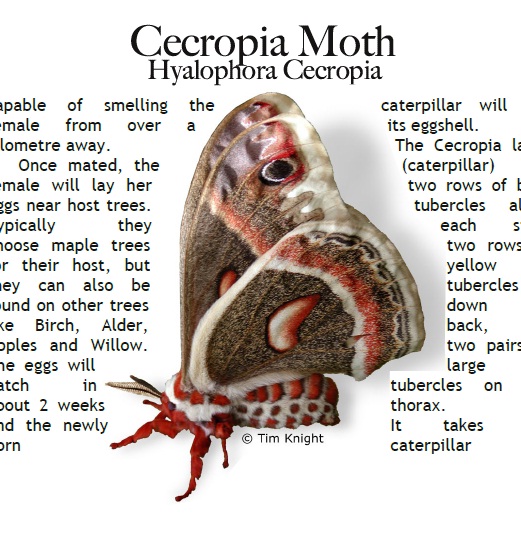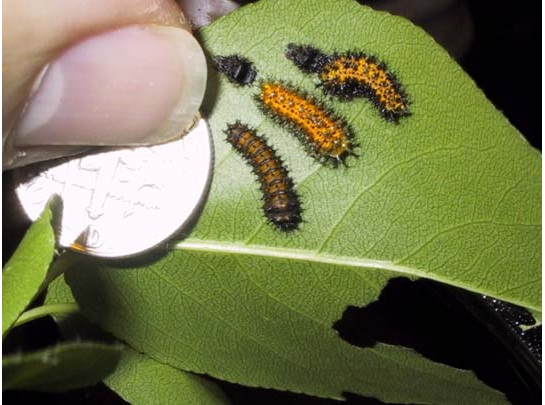
The Cecropia Moth is North America’s largest native moth and is a member of the giant silk moth family. It can be found in all Canadian provinces except BC and Newfoundland. The wings are reddish brown, and crossed in the middle with a white band. In the middle of each wing there is a crescent-shaped white spot bordered with red. The moths can have a wingspan up to 160 mm (6 inches!)
Females have a large abdomen for egg production, and males have hugely feathered antennae to detect the pheromones that the female emits. The male is capable of smelling the female from over a kilometer away.
Once mated, the female will lay her eggs near host trees. Typically they choose maple trees for their host, but they can also be found on other trees like Birch, Alder, Apples and Willow. The eggs will hatch in about 2 weeks and the newly born caterpillar will eat its eggshell.

The Cecropia larva (caterpillar) has two rows of blue tubercles along each side, two rows of yellow tubercles down its back, and two pairs of large red tubercles on the thorax. It takes the caterpillar approximately 2 months to reach full size at which time they will find a dark secluded place to attach themselves to a branch or stick and form their cocoon. This cocoon will overwinter and the adults will emerge the following spring.
Adult Cecropia moths do not have mouth parts and thus are unable to eat. As a result, the lifespan for an adult is generally only about 7-10 days. For the Silo, Dixie Greenwood.
Supplemental– http://www.wormspit.com/cecropia.htm